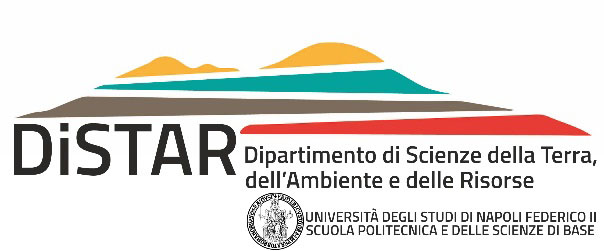Giovedì 18 Ottobre ore 15:00
Aula Geo 1 – Edificio 10
Complesso Universitario di Monte S. Angelo - Napoli
David De Vleeschouwer, MARUM - Center for Marine Environmental Research
Universität Bremen
Earth's climate has undergone different intervals of gradual change as well as abrupt shifts between climate states. During this seminar, we will characterize the corresponding changes in climate and carbon cycle response to astronomical forcing in the icehouse portion of the Cenozoic, from the latest Eocene to the present. As a tool, we use 35-m.y.-long benthic δ18O and δ13C records, compiled from different high-resolution benthic isotope records spliced together (what we refer to as a megasplice).
We analyze the climate response to astronomical forcing during four 800-k.y.-long time windows. During the mid-Miocene Climatic Optimum (ca. 15.5 Ma), global climate variability was mainly dependent on Southern Hemisphere summer insolation, amplified by a dynamic Antarctic ice sheet; 2.5 m.y. later, relatively warm global climate states occurred during maxima in both Southern Hemisphere and Northern Hemisphere summer insolation. At that point, the Antarctic ice sheet grew too big to pulse on the beat of precession, and the Southern Hemisphere lost its overwhelming influence on the global climate state. Likewise, we juxtapose response regimes of the Miocene (ca. 19 Ma) and Oligocene (ca. 25.5 Ma) warming periods. Despite the similarity in δ18O benthic values and variability, we find different responses to precession forcing. While Miocene warmth occurs during summer insolation maxima in both hemispheres, Oligocene global warmth is consistently triggered when Earth reaches perihelion in the Northern Hemisphere summer. This pattern is in accordance with previously published paleoclimate modeling results and suggests an amplifying role for Northern Hemisphere sea ice.
Furthermore, we will explore exactly how the pace of the current anthropogenic carbon cycle perturbation relates to rapid shifts in the global carbon cycle of the past. We show that, over the last 35 Myr, the δ13C isotope composition of the deep-sea changes at a maximum rate of 0.24‰ per thousand years (kyr) during carbon cycle perturbations. This maximum pace appears on precessional timescales (~20 kyr periodicity), as Milankovitch forcing through precession is the fastest periodic natural forcing on supra-annual timescales. We compare this value to contemporary carbon cycle simulations with the Earth system model cGENIE forced by Intergovernmental Panel on Climate Change (IPCC) scenario A1B. In our simulation of future deep-ocean δ13C, the anthropogenically-forced rate of change amounts to 0.9‰ per thousand years, which is almost four times faster than the rate encountered during the fastest geological carbon cycle perturbations of the past 35 Myr.
David de Vleeschouwer, is presently a post-doctoral researcher at MARUM, Universität Bremen, Germany, where he works on the application of astrochronology to Cenozoic stratigraphy, paleoclimate and paleoceanography.
David completed his PhD thesis in 2014 at the Department of Geology of the Vrije Universiteit Brussels, Belgium. For his thesis on Devonian climate, he combined data from field observations, high-resolution geochemistry, time series analyses and climate modelling. He integrated results from radiometric dating with astrochronology, combined with Bayesian statistics. His pioneering work resulted in the reduction of time-scale uncertainty and, hence, in a very precise stratigraphy of the Devonian and in a substantial improvement of the Devonian time scale.
David has received several awards for outstanding presentations at national and international conferences and workshops. His scientific skills are well reflected in a number of excellent publications (34 since 2012)
For his research on Devonian astrochronology and climate, David received in 2016 the EGU outstanding early career scientist award for the Division Stratigraphy, Sedimentology and Palaeontology.
Locandina
Carbon cycle and climate response to astronomical forcing during the past 35 m.y.
-

